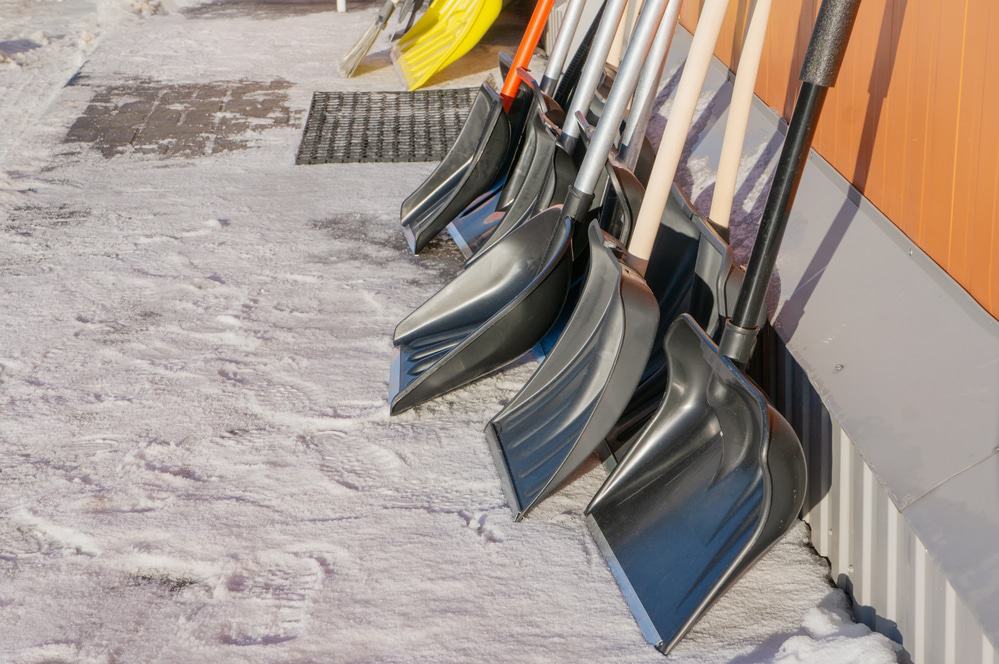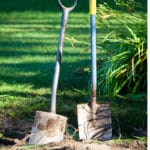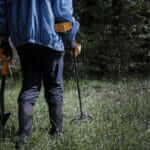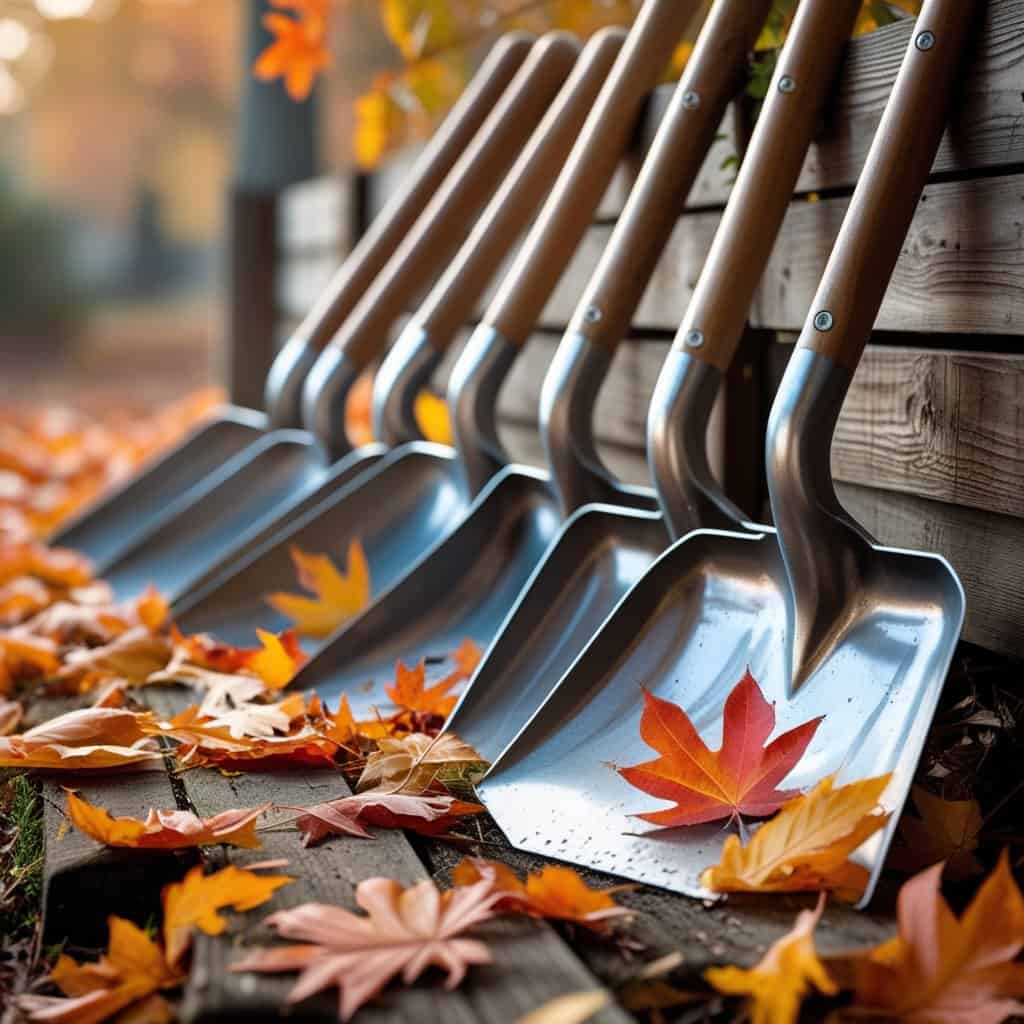When the time arrives to get the snow off walkways and streets, suddenly people start thinking about the easiest way to move masses of the cold white powder.
Nowadays, those who live with large snowfalls each year delve into this discussion: Are there differences between a snow shovel and a snow pusher?
Most anyone in cold-winter regions knows what a snow shovel is, but what is a snow pusher? A snow pusher is a hand-held human-powered, personal version of the big industrial or vehicle-mounted plows you see on city streets.
Snow pushers look similar to snow shovels, with a handle protruding up from the blade, which continues up to an end-grip. In use, typically, the snow pusher is lighter than the snow shovel. Snow shovels are built more sturdily due to the often-heavy lifting involved.
Table of Contents
The Need for Snow-Removal Options
Those from warm or moderate winter locations may not understand the tediousness of moving freshly fallen snow from one place to another.
Snow is from water, and as such, carries significant weight. The more you let pile up in areas needed for access or safety, the more physical the task.
Snow-moving can appear simple, but as with most property-maintenance tasks, choosing the right tools can significantly impact saving time and energy. Many injuries occur each year due to snow-shovelling, so finding the best solution is a yearly search.
Pros and Cons of Snow Shovels and Snow Pushers
Snow Shoveling
Snow shovels have been around for an estimated 6,000 years – the earliest found was in Russia.
The shovel was created from carved elk antlers tied to a bone or wood handle. For thousands of years, people have found this shovel set up useful, for several reasons, among them:
- The large, curved-blade style allows for scooping significant snow portions right off the ground.
- Ease of use: you look at a snow shovel and pretty much know how to use it; scoop, toss aside, repeat.
- Easy to produce, with different materials including rust-free metals for the blade, a wood or light metal handle, and sometimes tips at the bottom of the blade made of steel or rubber.
- Health benefits abound in the intense cardiovascular workouts shovel demands if used correctly.
- A snow shovel is very mobile and clears snow on concrete and asphalt surfaces or carried to the middle of a forest to make a snow fort.
There are cons, however, including:
- With a full load of snow, the blade can get quite heavy, requiring proper ergonomic handles.
- It can be tedious to clear a large area of fallen snow; aside from ergonomics, the repetition of lifting and tossing heavy loads can cause joint or muscle pain or injuries.
Snow Pushers
Not everyone is familiar with using a snow pusher.
Modern shovel designs often aim at avoiding the repetitive lifting and tossing required for classic snow shovel use.
A snow pusher does what it says. It pushes snow out of the way with a concave scoop without the need for lifting. The snow pusher design allows one to move snow over to the side of an area rather than lifting snow and tossing it out of the way.
Pros of a Snow Pusher
- The repetitive, heavy lifting and twisting while removing snow is significantly decreased.
- The angled blade does the work clearing leading to a smoother operation as users push forward using the handle.
- Lifting is the weight of the snow can lead to heart attacks while shoveling. The snow pusher reduces tension on the heart and the back as the snow is not lifted.
- With a snow pusher, the snow can be placed evenly along a path, compared with the old snow shovel where users tend to create big piles in one specific location.
- Suitable for larger flat areas needing snow removal, such as a driveway, yard or recreational space.
- Push plows are useful for organizing and stacking snow, compared with merely tossing it out of the way.
Cons of snow-pushing:
- For the most part, it’s best on flat and even surfaces, overall smaller in size.
- The blade can get stuck while pushing when a user runs into a block of ice or other hidden obstructions such as uneven cement.
- If the surface below is not flat, extra snow could remain behind.
- The blade tends to be quite large, creating a storage challenge.
How to Choose a Shovel or Snow Pusher
In choosing your snow-removal tool, consider the situation or your needs.
1. Snow Conditions
Is it soft, hard-packed or fresh snowfall?
If the answer is it is soft or fresh snowfall then using a snow pusher is the best choice.
If the answer is that the wind arrived and hard packed the snow or the snow is days old and may be frozen or more difficult to penetrate, then a snow shovel would be ideal.
2. Amount and depth of the snow
Light snow pushers are for snow or ice less than 4 inches. Think of them as “quick-fixes.”
Any snowfall deeper than a few inches high might require a shovel or snow bucket.
Greater than 4 inches of snow will require a shovel.
Less than 4 inches of snow, then a snow pusher is your shovel of choice.
3. Storage of Cleared Snow
What space do you have to place the snow.
If you are able to store the snow in a row, perhaps along the edge of your drive way, then your pusher will be the best choice.
If you need to pile the snow in a specific location the storage of the white stuff would mean utilizing a shovel.
Safety Considerations
Whichever snow-moving tool you choose, some universal safety suggestions apply:
Focus on using your legs as much as possible, bending knees to lift and avoid overly using your back.
Push snow when possible instead of lifting.
Stretch and warm muscles before snow-clearing sessions.
Don’t hurry; drink plenty of fluids before and during, and take breaks when needed.
Dress appropriately; don’t get caught outside far away from structures or heated vehicles.






